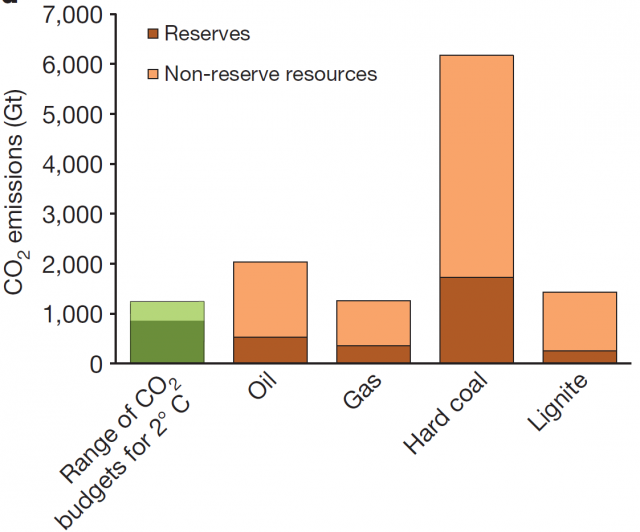Stable climate demands most fossil fuels stay in the ground, but whose?
Ars Technica » Scientific Method 2015-01-10
In the abstract, moving away from fossil fuels sounds relatively straightforward. But the closer you look, the more complex the challenge appears. How quickly do we have to kick the fossil fuel habit? Should developing nations forego the artery-clogging feast of dirty energy that other nations used to fuel their development? And how much coal, oil, and gas will each nation have to leave in the ground—potential profits notwithstanding?
In a new study, University College London researchers Christophe McGlade and Paul Ekins examine that last question. The latest Intergovernmental Panel on Climate Change report concluded that between 2011 and 2050, we can only emit around 1,000 gigatons of CO2 if we want to limit warming to 2°C above preindustrial temperatures, which governments have pledged to do. Current fossil fuel reserves—the known amount of fossil fuels that can be produced at a reasonable profit today—equal almost 3,000 gigatons of CO2. Adding in the fossil fuels that are not economically viable today but probably could be eventually brings that number up in the neighborhood of 11,000 gigatons.
That means a whole lot of fossil fuels need to stay in the ground. The researchers ran simulations with economic models to find the mix of fossil fuels that maximizes the economic benefit to each country while still staying below 1,000 gigatons of CO2. They took into account the costs of producing various types of coal, natural gas, and oil as well as the cost of bringing it to market in each region. In the end, they produced estimates of how much of each region's reserves should be considered “unburnable” in this economically optimized scenario.
Read 10 remaining paragraphs | Comments
